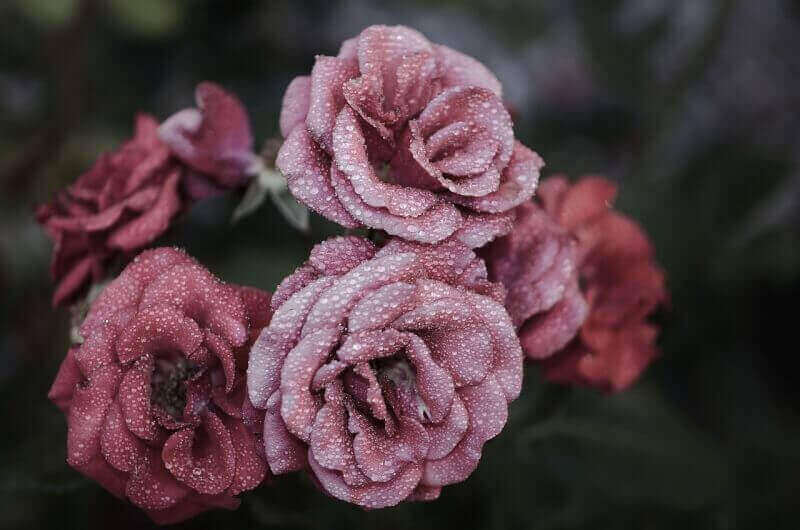👋 Click the mic button to talk to Alfred, the Todd's Seeds Gardening/Sprouting Expert – Feel free to ask him anything!
Ask Virtual Todd Anything - Click the Mic
So, you’ve successfully nurtured your seedlings indoors, and now it’s time to give them a new home in the garden. Transplanting seedlings might feel like a daunting task, but fear not! This article will guide you through the process, providing you with expert tips and tricks to ensure that your precious seedlings thrive in their new environment. With a little bit of care and a sprinkle of know-how, you’ll have your garden blooming in no time!
Preparing Seedlings for Transplant
Before transplanting your seedlings into the garden, it’s essential to ensure they are adequately prepared. This involves choosing the right time to transplant, hardening off the seedlings, and preparing the garden bed. By following these steps, you can give your seedlings the best chance of success in their new environment.
Choosing the Right Time to Transplant
Timing is crucial when it comes to transplanting seedlings. You want to wait until they are strong and well-established, but not too large that their root systems become tangled or root-bound. As a general guide, seedlings should have a few sets of true leaves and a well-developed root system before transplanting.
Hardening Off Seedlings
Hardening off is the process of gradually acclimating your seedlings to the outdoor conditions they will face in the garden. This is done by exposing them to increasing amounts of sunlight, wind, and fluctuating temperatures over a period of 7 to 10 days. By gradually introducing them to these conditions, you can help prevent shock and stress when transplanting.
Preparing the Garden Bed
Preparing the garden bed is an essential step in ensuring the success of your transplanted seedlings. Start by clearing any weeds or debris from the area and breaking up the soil. Add organic matter, such as compost or aged manure, to improve the soil’s fertility and drainage. Avoid using fresh manure, as it may be too nitrogen-rich and can burn the delicate roots of your seedlings.
Transplanting Techniques
Once your seedlings are prepared and your garden bed is ready, it’s time to transplant them into their new home. Use the following techniques to ensure a successful transplanting process.
Digging Proper Holes
When transplanting your seedlings, it’s important to dig holes that are wide and deep enough to accommodate the root systems without crowding or bending them. Gently loosen the soil around the seedling’s root ball and place it in the hole. Backfill the hole with soil, making sure to firm it gently around the seedling.
Watering Seedlings
Water your seedlings thoroughly before transplanting to ensure their roots are well-hydrated. After transplanting, continue to water them regularly, especially during dry spells or hot weather, to help them establish in their new environment. Avoid overwatering, as excessive moisture can lead to root rot and other issues.
Transplanting Depth
Transplant your seedlings at the same depth they were growing in their original containers or trays. Planting them too deep can smother the seedlings and hinder their growth, while planting them too shallow may expose their delicate roots to the air and make them susceptible to drying out.
Spacing Seedlings
Proper spacing is crucial to allow each seedling enough room to grow and access sunlight, water, and nutrients. Follow the spacing recommendations for each plant species or variety, which can usually be found on the seed packet or plant label. Overcrowding seedlings can lead to competition for resources and increased risk of disease.
Transplanting Method for Different Seedling Types
Different types of seedlings may require slightly different transplanting techniques. For instance, seedlings with a taproot, like tomatoes or peppers, should be transplanted deeply to encourage strong root development. On the other hand, seedlings with fibrous roots, like lettuce or herbs, are best transplanted at the same depth as in their original containers.

After Transplantation
Once your seedlings are safely transplanted into the garden, there are a few important steps to take to ensure their continued success and survival.
Watering Techniques
Proper watering is essential for the health and establishment of transplanted seedlings. Water thoroughly after transplanting and continue to provide deep, consistent watering until the seedlings are well-established. Avoid shallow watering, as it can lead to shallow root development, making the seedlings more susceptible to stress and drought.
Mulching the Garden Bed
Applying a layer of mulch around your transplanted seedlings can provide numerous benefits. Mulch helps retain moisture in the soil, suppress weeds, and regulate soil temperature, protecting the roots from extreme heat or cold. Use organic mulch, such as straw or wood chips, and apply it around the base of the seedlings, leaving a small gap to prevent the mulch from touching the stems.
Providing Support
Some seedlings, particularly those that grow tall or vine-like, may require additional support to prevent them from bending or breaking. Install stakes or trellises alongside the seedlings and gently tie them to the support using soft plant ties or twine. This will help ensure proper growth and prevent damage caused by wind or heavy fruit.
Protecting Seedlings from Pests and Elements
Transplanted seedlings can become vulnerable to pests and the elements, such as harsh weather conditions or hungry animals. Consider using row covers or protective netting to shield young seedlings from insects and birds. Additionally, monitor the weather forecast and provide temporary protection, such as a cloche or improvised shelter, during extreme temperatures or heavy rainfall.
Special Considerations
While the transplanting process is generally straightforward, there are a few special considerations to keep in mind, depending on the circumstances.
Transplanting Seedlings in Containers
If you are transplanting seedlings that have been growing in containers, make sure to gently remove them from their pots, being careful not to damage the roots. Lightly tease out any tangled or circling roots before planting them in the garden bed. Water the seedlings thoroughly after transplanting to help reduce transplant shock.
Transplanting Seedlings on a Rainy Day
Transplanting on a rainy day can be advantageous, as the moisture in the soil helps the seedlings settle into their new environment. However, make sure not to transplant during heavy downpours, as it can lead to soil compaction and waterlogging. Choose a time when the rain is gentle or lightly drizzling for the best results.
Transplanting Seedlings in Hot Weather
Transplanting in hot weather can be more challenging, as the high temperatures can stress both the seedlings and their root systems. To minimize heat stress, try transplanting in the early morning or late afternoon when the temperatures are cooler. Provide shade for the seedlings during the hottest parts of the day, either with shade cloth or by using a temporary shade structure.
Transplanting Seedlings in Cold Weather
Cold weather can also pose a risk to newly transplanted seedlings, especially if they are not cold-tolerant varieties. If you need to transplant in colder conditions, protect the seedlings with row covers or cloches to provide some insulation. Additionally, consider using a thick layer of mulch or straw around the base of the seedlings to help retain soil warmth.
Transplanting Seedlings with Fragile Roots
Some seedlings, like those with delicate or fragile root systems, require extra care during transplanting. Handle them gently and avoid disturbing the roots as much as possible. Consider using a transplanting tool, such as a hand trowel or a small shovel, to minimize root damage. Water the seedlings immediately after transplanting to help settle the soil and ensure adequate moisture.

Common Mistakes to Avoid
To achieve successful seedling transplantation, it’s important to be aware of and avoid common mistakes that can hinder their growth and survival. By avoiding these pitfalls, you can increase the likelihood of healthy and thriving seedlings in your garden.
Transplanting Seedlings Too Early
Transplanting seedlings too early can expose them to cold temperatures or frost, which can stunt their growth or lead to their demise. Make sure to follow the recommended transplanting dates for your specific region and plant varieties. If in doubt, it’s better to wait a little longer than to risk transplanting too early.
Not Hardening Off Seedlings Properly
Skipping or rushing the hardening off process can shock seedlings when suddenly exposed to the harsh outdoor conditions. Take the time to gradually acclimate the seedlings to sunlight, wind, and temperature fluctuations to help them adjust before transplanting. This step is crucial to prevent stress and increase their resilience.
Improper Watering
Watering seedlings incorrectly can be detrimental to their health. Overwatering can lead to root rot and other fungal diseases, while underwatering can cause stress and hinder growth. Strike a balance by watering deeply and consistently, ensuring the soil is evenly moist but not waterlogged. Monitor the soil moisture regularly and adjust your watering schedule accordingly.
Planting Seedlings Too Deep
Planting seedlings too deep can suffocate their roots and inhibit their growth. Make sure to transplant them at the same depth they were growing in their original containers. The crown of the seedling, where the stem meets the roots, should be level with the soil surface. Planting too shallowly can also expose the roots to drying out, so find the right balance.
Overcrowding Seedlings
Overcrowding seedlings in the garden bed leads to intense competition for resources like sunlight, water, and nutrients. This can result in stunted growth and increased susceptibility to diseases. Follow the recommended spacing guidelines for each plant species to provide adequate room for each seedling to thrive.
Choosing the Right Tools
Having the right tools at hand can make the transplanting process smoother and more efficient. Here are some essential tools you may need:
Gardening Gloves
Invest in a good pair of gardening gloves to protect your hands from dirt, potential sharp objects, and any irritants that may be present in the soil. Gloves provide protection and minimize the risk of injury, making your gardening experience more enjoyable.
Hand Trowel or Transplanting Tool
A hand trowel or transplanting tool is useful for digging the proper holes for transplanting seedlings. Look for a tool with a comfortable grip and a sharp, sturdy blade that can easily penetrate the soil. This tool will help you achieve the right depth and width for successful transplantation.
Watering Can or Garden Hose
To ensure the well-being of your transplanted seedlings, you’ll need an efficient watering system. A watering can with a fine rose attachment is ideal for delicately watering the seedlings. Alternatively, a garden hose with an adjustable nozzle can provide a gentle spray for thorough hydration.
Mulch
Mulch plays a vital role in maintaining soil moisture, preventing weed growth, and protecting delicate seedlings. Consider using organic mulch like straw, wood chips, or compost. These materials not only enhance the appearance of your garden bed but also contribute to its overall health and fertility.
Stakes or Supports
Tall or vine-like seedlings often need additional support to prevent them from bending or breaking under their weight. Stakes or supports should be sturdy and tall enough to accommodate the growth of the specific plant. Attach the seedlings to the supports with soft plant ties or twine, ensuring they have room to grow and expand.
Row Covers or Protective Netting
Protecting your seedlings from pests and harsh weather conditions is essential for their survival. Row covers or protective netting can safeguard the young plants while still allowing light and air to reach them. Choose materials that are lightweight and easy to install, ensuring they fit securely around your garden bed.

Transplanting Seedlings FAQs
As with any gardening task, questions may arise during the transplanting process. Here are answers to some frequently asked questions to help guide you.
How long should seedlings be before transplanting?
Seedlings should be transplanted once they have developed a few sets of true leaves and a well-established root system. This generally takes about 4 to 6 weeks after germination, but it may vary depending on the plant variety and growing conditions. Monitor the growth of your seedlings and transplant them when they are strong enough to survive the transplantation process.
What is the best time of day to transplant seedlings?
The best time of day to transplant seedlings is early morning or late afternoon when the temperatures are cooler. Avoid transplanting during the hottest part of the day, as the heat can stress the seedlings and increase the risk of transplant shock. By choosing a cooler time, you give the seedlings a better chance to establish themselves in their new environment.
Can I transplant seedlings in clay soil?
Transplanting seedlings in clay soil can be challenging due to its heavy texture and poor drainage. If you have clay soil, consider amending it with organic matter, such as compost or well-rotted manure, to improve its structure and drainage. Before transplanting, loosen the soil in the planting area to encourage root growth and ensure water movement.
Should I fertilize seedlings after transplanting?
In most cases, it is not necessary to fertilize seedlings immediately after transplanting. The seedlings will initially rely on the nutrients present in the soil. However, if your soil lacks fertility or if you notice signs of nutrient deficiency, you can apply a balanced, water-soluble fertilizer according to the instructions on the packaging. Always avoid over-fertilizing, as this can harm the seedlings.
What can I use to protect seedlings from pests?
To protect seedlings from pests, you can use various methods. Installing row covers or fine mesh netting can prevent insects and birds from damaging the seedlings. Applying organic insecticidal soap or homemade remedies like neem oil can deter pests effectively. Physical barriers, such as fencing or cages, can also safeguard the seedlings from larger animals like rabbits or deer.
Conclusion
Transplanting seedlings into the garden is an exciting step in the journey of growing plants. By following the proper preparation, transplanting techniques, and post-transplantation care, you can ensure the success of your seedlings. Remember to choose the right time for transplanting, harden off the seedlings, and properly prepare the garden bed. Use the right tools, avoid common mistakes, and address any special considerations. With these guidelines and a little TLC, your transplanted seedlings will flourish and reward you with a bountiful garden. Happy transplanting!
